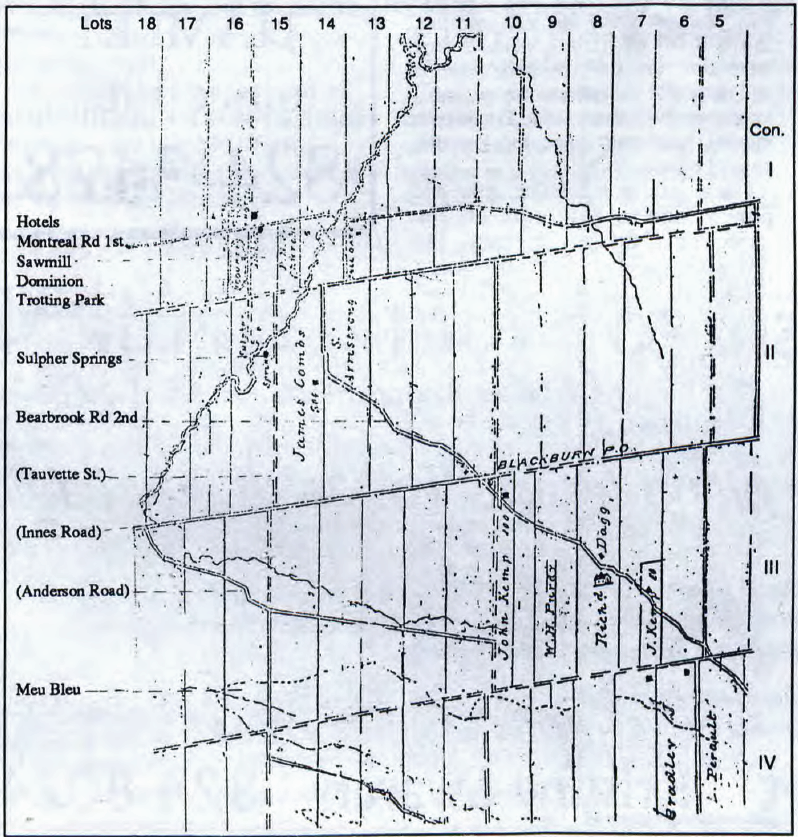Published in The BANAR August 1996
by Lois Kemp
Blackburn Roots will tell of the beginning and development of Blackburn as I’ve read in various books. I don’t want to present these stories as being “gospel”, as they’ve not been fully researched by me. I’ll gladly be corrected by anyone who can illuminate my knowledge.
The 1834 assessment roll showed on Concession I Ottawa Front there were
sixteen families on Lots 1-20. On Concession II, only seven; Concession Ill, three; and on Consessions V, VI and VII only one each. These statistics clearly show that the lots along the waterfront were preferred to the dense forest lots further south.
The community that became known as Blackburn covered most of Concessions II, Ill and IV Ottawa Front from Lots 5 to 15. The lot lines did not always join the corresponding line in the next concession, thus, the jogs in roads following lot lines (See map).
The community was first known as Green’s Creek after Mr. Green, who owned and operated a sawmill on the creek south of Montreal Road. The community became known as the Daggs settlement, or Daggville, when Richard, John and Thomas Dagg all settled in the early 1850s. Other early settlers were Louis and Elizabeth (Cosgrove) Perrault, 1853; John and Elizabeth (Bradley) Kemp, 1857; William and Sarah Jane Purdy, 1858; and Joshua and Lucinda (Clarke) Bradley in 1859.
Descendants of the Perrault, Kemp and Bradley settlers are still living on the original homesteads.
In the early 1880s, the community felt there was a need for their own post office, as they had to go to the Cummings Bridge P.O. for their mail.
William Bradley, son of Joshua, went to see Robert Blackburn, who was their member of Parliament, and asked him to back a claim for a post office.
This prominent lumberman protected the interest of Blackburn as Reeve of Gloucester in 1864 and later as a member of Parliament. When it was agreed to give the community a post office, it was called Blackburn in honour of Mr. Blackburn.
Since then, there has been Blackburn Community, Blackburn Corners, Blackburn Station, and Blackburn
Hamlet. For recreation purposes, there is still the Blackburn Recreation Area.

Sources: Blackburn & Gien Ogilvie History, Anna Elliott; Gloucester Roots, Grace Johnston; Historical Atlas of Carleton, H. Beldon.
